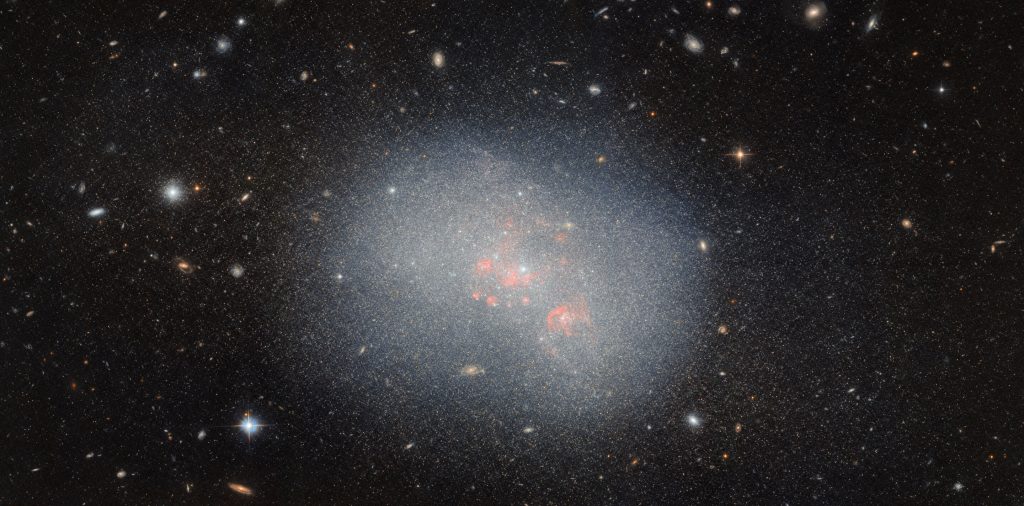This NASA/ESA Hubble Space Telescope image captures the dwarf irregular galaxy NGC 5238. ESA/Hubble & NASA, F. Annibali
This NASA/ESA Hubble Space Telescope image captures the dwarf irregular galaxy NGC 5238, 14.5 million light-years from Earth in the constellation Canes Venatici. Its unremarkable, blob-like appearance makes it more similar to an outsized star cluster than a typical galaxy image.
But its unassuming appearance belies a complex structure that has been the subject of much study: As the image shows, Hubble was able to capture countless stars in the galaxy and their associated stellar components. Globular clustersWithin and around the galaxy are bright points of light populated with even more stars.
Astronomers theorize that NGC 5238 may have had a close encounter with another galaxy a billion years ago. The distorted shape of NGC 5238 is evidence of this interaction. When two galaxies interact, their respective gravity distorts the distribution of stars in each galaxy.
there is no Nearby galaxies Because of this event, which may have caused the disturbance, astronomers believe NGC 5238 swallowed a smaller satellite galaxy. Astronomers are looking for signs of the swallowed galaxy by closely examining the stars of NGC 5238, a task well suited to Hubble’s excellent resolution. One telltale sign of a smaller galaxy is a group of stars with different properties than most of the other stars in NGC 5238, indicating that they originally formed in another galaxy. Another sign is a sudden burst of star formation that occurred around the same time the two galaxies merged. The Hubble data used to create this image will help astronomers shed light on the history of NGC 5238.
Despite their small size and inconspicuous appearance, dwarf galaxies like NGC 5238 often drive our understanding of galaxy formation and evolution. One of the leading theories of galactic evolution is that galaxies formed hierarchically and “bottom-up”: star clusters and small galaxies first formed from gas, Dark matter.
Over time, gravity gradually collects these small objects together. Galaxy cluster “And superclusters explain the shape of the largest structures we see in the Universe today. The merger of a dwarf irregular galaxy like NGC 5238 with a smaller companion galaxy is the type of event that could have initiated the process of galaxy formation in the early Universe. Hubble Space Telescope observations of tiny NGC 5238 could help test some of the most fundamental ideas about how the Universe evolves.”
Quote: Hubble Telescope Suggests Potential Galactic Merger (July 19, 2024) Retrieved July 20, 2024 from https://phys.org/news/2024-07-hubble-views-potential-galactic-merger.html
This document is subject to copyright. It may not be reproduced without written permission, except for fair dealing for the purposes of personal study or research. The content is provided for informational purposes only.


